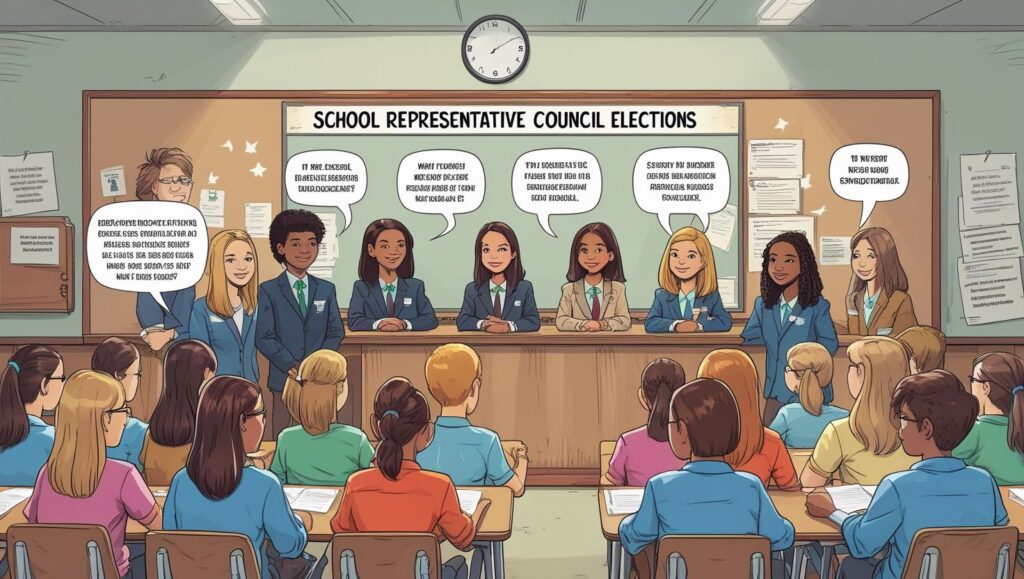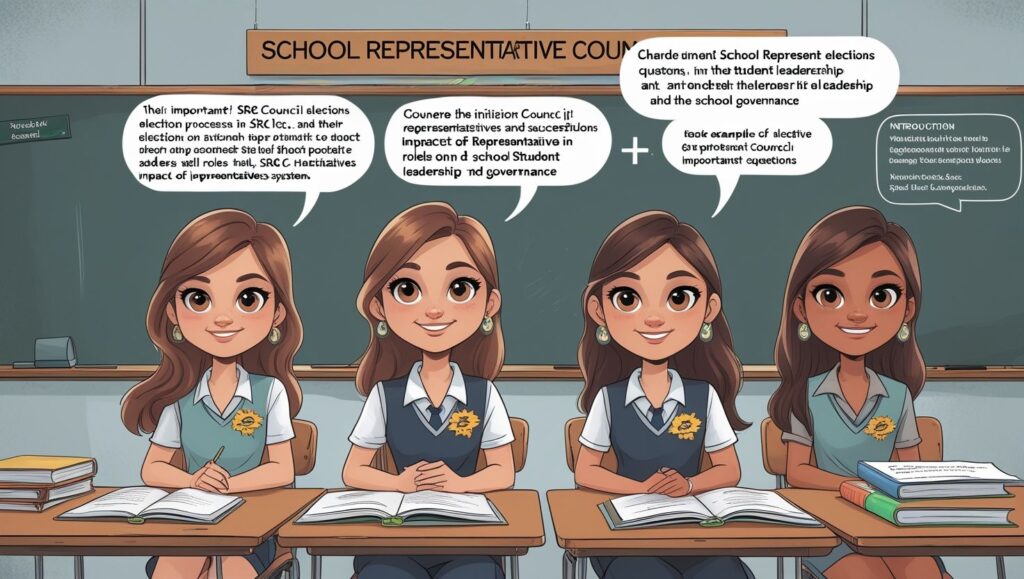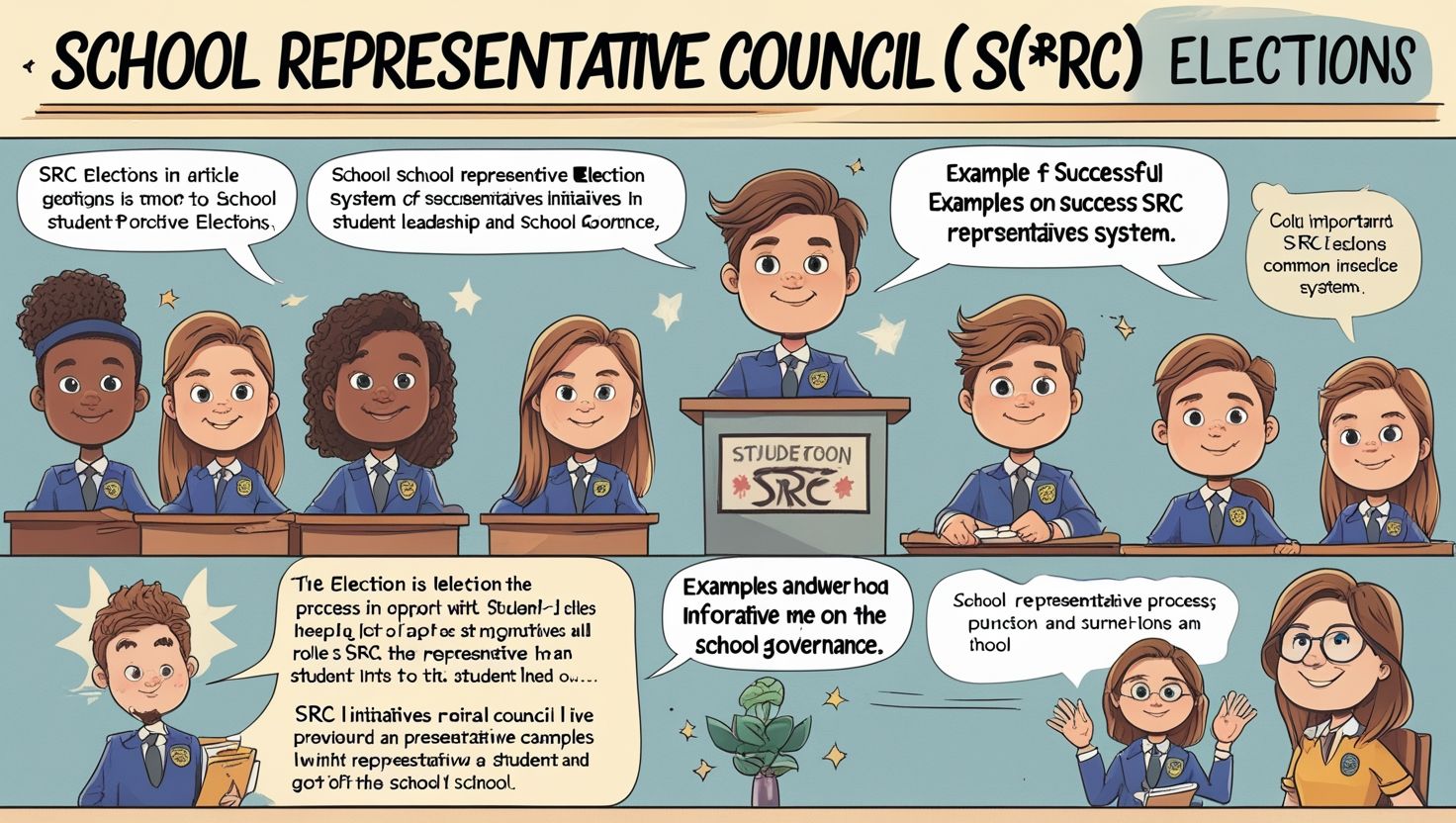Introduction
School Representative Council Election at School, School Representative Council (SRC) elections are a fundamental part of student governance, providing learners with an opportunity to participate in democratic processes and develop leadership skills. These elections allow students to elect peers who will represent their interests, voice concerns, and collaborate with school administration to improve the academic and social environment. The SRC serves as a bridge between students and faculty, ensuring that student opinions are considered in decision-making.
The significance of SRC elections lies in their ability to instill democratic values, responsibility, and accountability in students from an early age. By engaging in campaigns, debates, and voting, students learn about fairness, teamwork, and civic duty. Additionally, the SRC plays a crucial role in organizing school events, addressing student grievances, and fostering a positive school culture.
This article explores the background of SRC elections, their main objectives, key processes, and their impact on student development. It also provides examples of successful SRC initiatives and discusses frequently asked questions about these elections. Understanding the dynamics of SRC elections helps educators and students appreciate their role in shaping future leaders and promoting an inclusive school environment.
Background of SRC Elections
The concept of student councils dates back to the early 20th century, with schools worldwide adopting formal structures for student representation. The SRC, also known as the Student Council or Prefect Body, was introduced to empower students and encourage active participation in school governance. Over time, these councils have evolved to include diverse roles such as president, vice-president, secretary, and class representatives.
In many educational systems, SRC elections are mandatory, reflecting the importance of student voice in institutional policies. The process typically involves nomination, campaigning, voting, and announcement of results, mirroring real-world electoral systems. Schools often establish electoral committees to oversee fairness and transparency.
The rise of digital platforms has further modernized SRC elections, with online voting and social media campaigns becoming common. However, challenges such as voter apathy, biased campaigning, and lack of inclusivity still persist. Despite these issues, SRC elections remain a vital tradition in schools, shaping responsible and engaged future citizens.

Main Ideas Behind SRC Elections
The primary purpose of SRC elections is to promote leadership, responsibility, and democratic engagement among students. Elected representatives act as liaisons between the student body and school administration, advocating for policy changes, event planning, and conflict resolution.
Another key idea is skill development. Through campaigning, public speaking, and teamwork, participants enhance their communication, critical thinking, and problem-solving abilities. These experiences prepare them for future leadership roles in higher education and professional careers.
Furthermore, SRC elections foster a sense of community. By involving students in decision-making, schools create an inclusive environment where every voice matters. This inclusivity strengthens school spirit and encourages collaborative efforts in academic and extracurricular activities.
Examples of Successful SRC Initiatives
Many schools have witnessed impactful SRC-led initiatives. For instance, some councils have introduced peer tutoring programs, mental health awareness campaigns, and anti-bullying policies. Others have organized charity drives, cultural festivals, and environmental sustainability projects.
A notable example is a school where the SRC successfully lobbied for healthier cafeteria meals, demonstrating their influence in policy changes. Another case involved an SRC that implemented a “buddy system” for new students, easing their transition into the school community. Such initiatives highlight the tangible benefits of student representation.

References
- Smith, J. (2018). Student Leadership and School Governance. Educational Press.
- Brown, L. (2020). The Role of SRC in Modern Education. Academic Publications.
- National Association of Student Councils. (2019). Best Practices for School Elections.
Conclusion
SRC elections are more than just a school tradition; they are a training ground for future leaders. By participating in these elections, students learn essential life skills, embrace democratic values, and contribute positively to their school community. The impact of a well-functioning SRC extends beyond academics, fostering a culture of collaboration, respect, and innovation.
Frequently Asked Questions (FAQs)
- Why are SRC elections important?
They teach students democracy, leadership, and responsibility. - How are SRC representatives chosen?
Through nominations, campaigns, and student voting. - What roles exist in an SRC?
President, vice-president, secretary, treasurer, and class reps. - Can SRCs influence school policies?
Yes, they advocate for student needs and propose changes. - How can students campaign effectively?
By presenting clear ideas, engaging peers, and maintaining integrity.
This structured approach ensures a comprehensive understanding of SRC elections, their significance, and their long-term benefits for students and schools.

I have been browsing on-line greater than three hours today, yet I never discovered any attention-grabbing article like yours. It?¦s pretty price enough for me. Personally, if all website owners and bloggers made just right content material as you probably did, the internet might be a lot more useful than ever before.